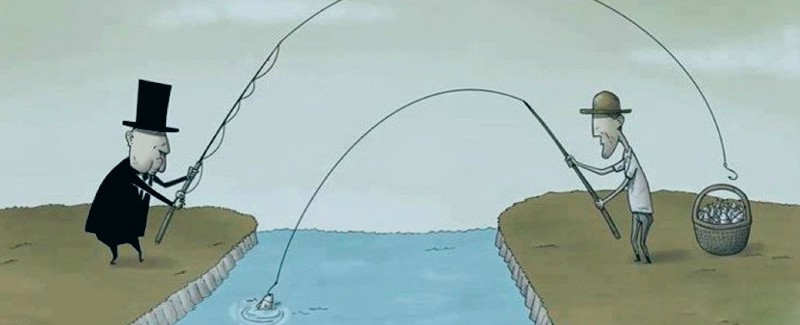The exam is a huge stress for the entire organism. Besides the fact that it is a great psychological burden (fear, anxiety, lack of confidence in one’s own strength and knowledge), it also creates great physical pressure (lack of sleep and malnutrition during the exams, which invariably lead to physical exhaustion of the body).
STUDYING FOR MIDTERMS TIPS
Stress is a powerful emotional and physiological response to the unexpected situation, need to make decisions and take action. To facilitate this process, it is necessary to introduce certainty into your actions.
This certainty comes from structuring of time and space. You need:
-
to write the exact dates, time, and location of the tests on a separate sheet of paper;
-
to create a detailed schedule for each day of preparation on the basis of the compiled list. Attach a sheet with a plan in the most visible place.
Remember that approximately every hour and a half of training, you need to take breaks for 10-15 minutes. Otherwise, overwork will quickly come, and you will stop remembering the material. During the break, you do not need to play computer games (they additionally load tired eyes and a nervous system). It is better to do some light exercise and drink a glass of juice or water.
Be sure to plan the time for food and sleep (8-9 hours). Strenuous mental work requires a huge energy expenditure of the whole organism. Therefore, you need to think about good nutrition in advance. Decide where and how you will eat during the exams. Read some more studying for midterms tips.
MEMORIZING MATERIAL
The most effective method of memorization is when all the answers to the tests are read several times in advance, and then a mini-outline (or a mini-plan of 4-5 points) is drawn up for each issue. This plan should reflect the sequence of presentation of information and include key moments of the topic to which attention should be paid.
After this, try (relying only on this plan) to build your answer mentally and to reproduce the previously read. If this fails the first time, do not be upset, try to understand what caused the difficulty and, if necessary, make the needed additions to your plan. Try again.
At the exam, it will be easier to concentrate and extract the necessary information from memory. It will save you from confusion and will help to give a clear, consistent answer.
In this technique, the emphasis is placed on two types of memory: visual (figurative) and motor ones, associative memorization is included too. It is possible to supplement the described method with one more simple but effective technique.
Its essence lies in the fact that the information you need to remember is drawn in the form of tables, diagrams, formulas on sheets of paper. Then these sheets are hung on the wall in front of the work desk, on the mirror, on the door, etc. The height, at which they are attached, should be eye level or a little higher so that the sheets always stay in your sight. The whole secret is that visual (figurative) memory works here, and memorization occurs involuntarily, without any effort on your part.
In addition, here is one more piece of advice: the research by psychologists showed that the process of forgetting has its own laws: after half an hour, 40% of the received new information is forgotten, the next day – 34%, after a week – 21%. Therefore, taking into account these peculiarities of human memory, it is necessary to plan your activities in preparation for the exams.
When a material is repeated, it is obligatory to speak it aloud, in this case, the motor (motor) and auditory memory work simultaneously, which ensures better memorization. If you want a long-term result, then it is better to repeat the material before bedtime, and then in the morning, you will remember almost everything. CONTROL YOUR PSYCHOLOGICAL STATE
Most people are anxious before tests. Often, students are demoralized by the first signs of this condition. However, psychologists and physiologists know that anxiety has not only negative but also positive properties. It is a sign of a person’s readiness to act (a sign of activation). Anxiety is experienced by most people, and it helps to respond and to perform as best as possible.
Think of an incident from your life when you became a “winner” (an excellent answer in class, performing at a talent contest, etc.). Try to “activate” this “winner” state and hold it for a while. Your body remembers this condition, and you can invoke it in yourself at will, for example, before an exam. How else can you help yourself to get rid of fear and anxiety?
VOICE AND GESTURES
We can determine the emotional state of a person by voice and gestures. A confident voice and calm gestures can have a good effect. In addition, a confident (but not arrogant) appearance will help to make a favorable impression on the professor.
SMILE
When you are especially worried and afraid, stand in front of the mirror and smile. After 3-4 minutes, you will make sure that the fear recedes. This is a very effective method since a person cannot smile and be afraid at the same time.
BREATH
Rhythmic breathing is very important for relieving tension. With strong agitation, you can make the exhalation twice as long as the inhale (5-8 times). If the voltage is extremely strong, take a deep sniff and hold your breath for 20-30 seconds.
MANAGE YOUR ACTIVITIES
Here are some studying for midterms tips for you. Make a diagram that can help you organize the material (brief notes, formulas, ideas, and excerpts from the text). This scheme will help you break up the preparation process into stages from which you can make a general training plan. Make a brief summary explaining the main ideas of the course and their interaction. It is possible to include a list of ideas in it, arranging them in the order of importance. Make audio recordings of your notes and text fragments from textbooks. It will give you the opportunity to study while walking and relaxing outside the college.











